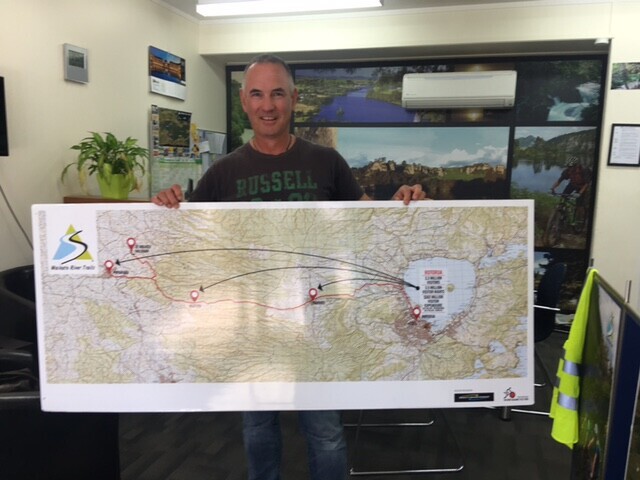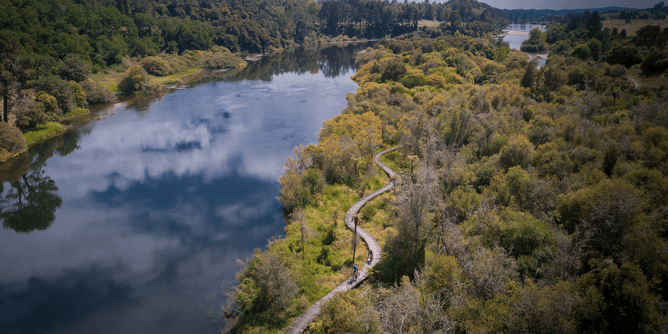INTRODUCTION
Expanding the Waikato River Trails, with their growing profile and popularity, by linking to other trails and activities in the area is an attractive proposition. Increasing the flow of visitors to the area for recreational activity would provide a major boost to retailers – particularly food-oriented businesses.
The rail corridor between Putāruru and Rotorua was closed to heavy rail 20 years ago. The route held commercial opportunity but only if it could be accessed cost efficiently and developed with agreement from all stakeholders.
BACKGROUND
The Waikato River Trails Trust focused on a primary connecting trail option from Putāruru to Rotorua and a secondary option, from the rail line to the Blue Spring. Both had significant appeal and experiential value.
It was recognised that trails constructed to a cycling standard but also walkable provided the greatest rate of return / participation. However, a feasibility study was needed to assess the practicalities of each option. Option one, for example, would need to leverage a 30-year lease with KiwiRail and transform a rail link that had virtually been abandoned over 20 years ago. Option two meant unifying disparate stakeholders in order to achieve a high value experience including nine historic but dilapidated bridges and native forest through to the Blue Spring – a relatively hidden yet magnificent asset.
The feasibility study aimed to quantify the cost of building the trail, the process, including complexity of community consultation and the availability of experienced contractors to commence works.
Waikato River Trails Trust applied to SWIFT for funding to undertake the feasibility study that would determine, and ideally substantiate, the overall business case for expansion.
SUMMARY
The feasibility study enabled Waikato River Trails Trust to narrow their focus on what was immediately possible and what needed to become a later stage effort requiring greater investment and community/stakeholder buy in.
The recommended two- stage approach was seen as ensuring mountain bikers gained a positive experience and worthwhile distance that would ultimately encourage their return for the next stage .
The next step is to leverage off the growing popularity of cycling and to continue to socialize the concepts with various stakeholders.
RESULT
The feasibility study detailed the outcomes of consultation and the expectations of stakeholders. It also clearly identified the additional activities such as signage, boardwalks, clearing, surfacing and culverts and their costs that would impact project timeframes. These costs were on top of project management and engineering considerations.
This meant that the final recommendation was for the rail corridor from Putaruru to Ngatira it be completed first and the link to the Te Waihou Walkway second.


